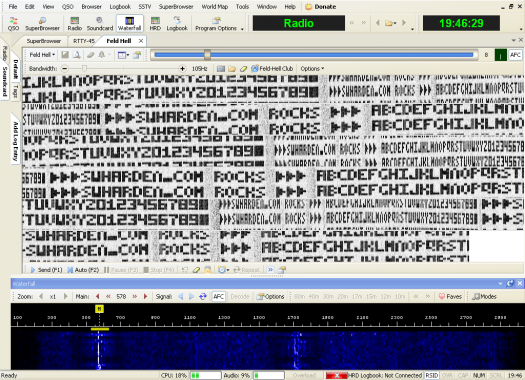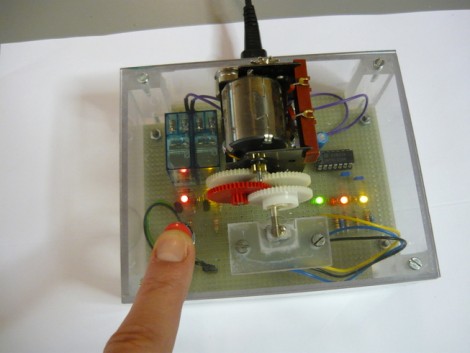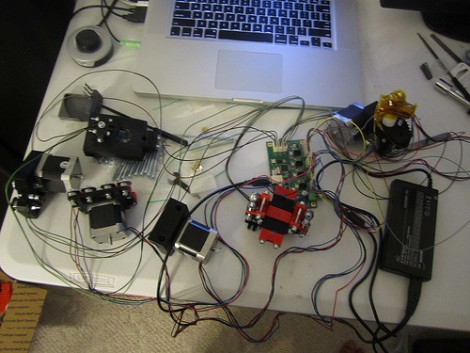
[Scott Harden] is drilling teeth by day and designing radios that send secret messages by night. He’s set his sights on the Hellschreiber protocol which was used by the Germans in World War II along with their Enigma encryption system. The protocol is a viable alternative for transmitting and receiving code in environments with too much background noise for other communication systems.
His goal was to develop his own transmitter using just one microcontroller. He picked an ATmega48 and coupled it with a 40 MHz crystal oscillator. [Scott] mentions that there is no other hardware necessary, but static messages stored in an array so you’d need some other hardware to push your own characters through via the chip’s UART or otherwise. The AVR sends messages by converting the data into audio using PWM. That signal is fed into the crystal oscillator, which produces an amplitude modulated signal (AM) that can then be transmitted.
Check out his video after the break for a demonstration. He’s decoding the transmitted data using a free program called Ham Radio Deluxe.
Continue reading “[Scott] Made A Single-chip Hellschreiber On Earth”
















